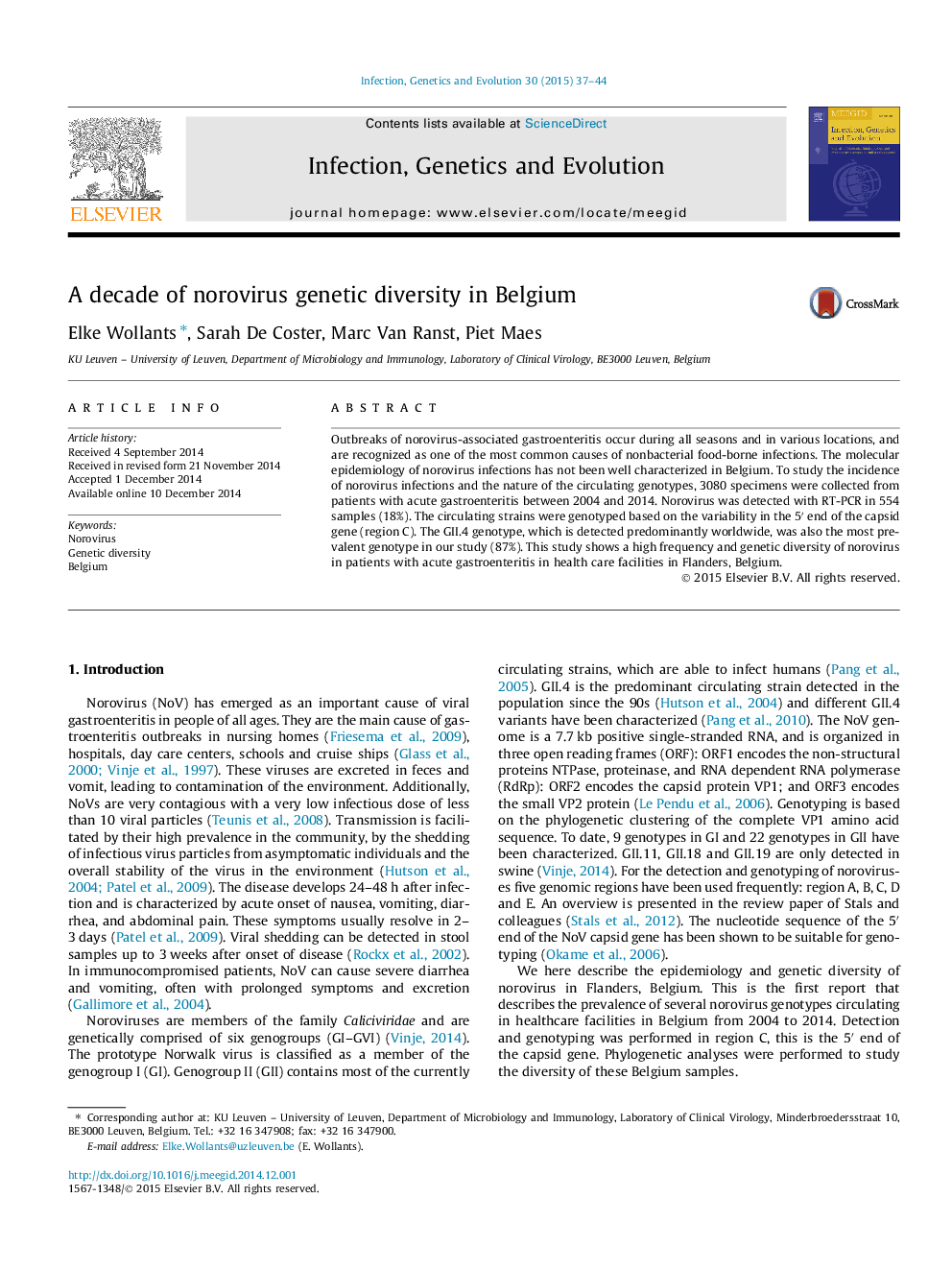| Article ID | Journal | Published Year | Pages | File Type |
|---|---|---|---|---|
| 5908719 | Infection, Genetics and Evolution | 2015 | 8 Pages |
â¢First report on the epidemiology of norovirus in health care facilities in Flanders.â¢A total of 3080 fecal samples collected during 10 consecutive years were analysed.â¢Phylogenetic analyses were performed with maximum likelihood.â¢Different norovirus genotypes were found and GII.4 was dominant.
Outbreaks of norovirus-associated gastroenteritis occur during all seasons and in various locations, and are recognized as one of the most common causes of nonbacterial food-borne infections. The molecular epidemiology of norovirus infections has not been well characterized in Belgium. To study the incidence of norovirus infections and the nature of the circulating genotypes, 3080 specimens were collected from patients with acute gastroenteritis between 2004 and 2014. Norovirus was detected with RT-PCR in 554 samples (18%). The circulating strains were genotyped based on the variability in the 5â² end of the capsid gene (region C). The GII.4 genotype, which is detected predominantly worldwide, was also the most prevalent genotype in our study (87%). This study shows a high frequency and genetic diversity of norovirus in patients with acute gastroenteritis in health care facilities in Flanders, Belgium.
